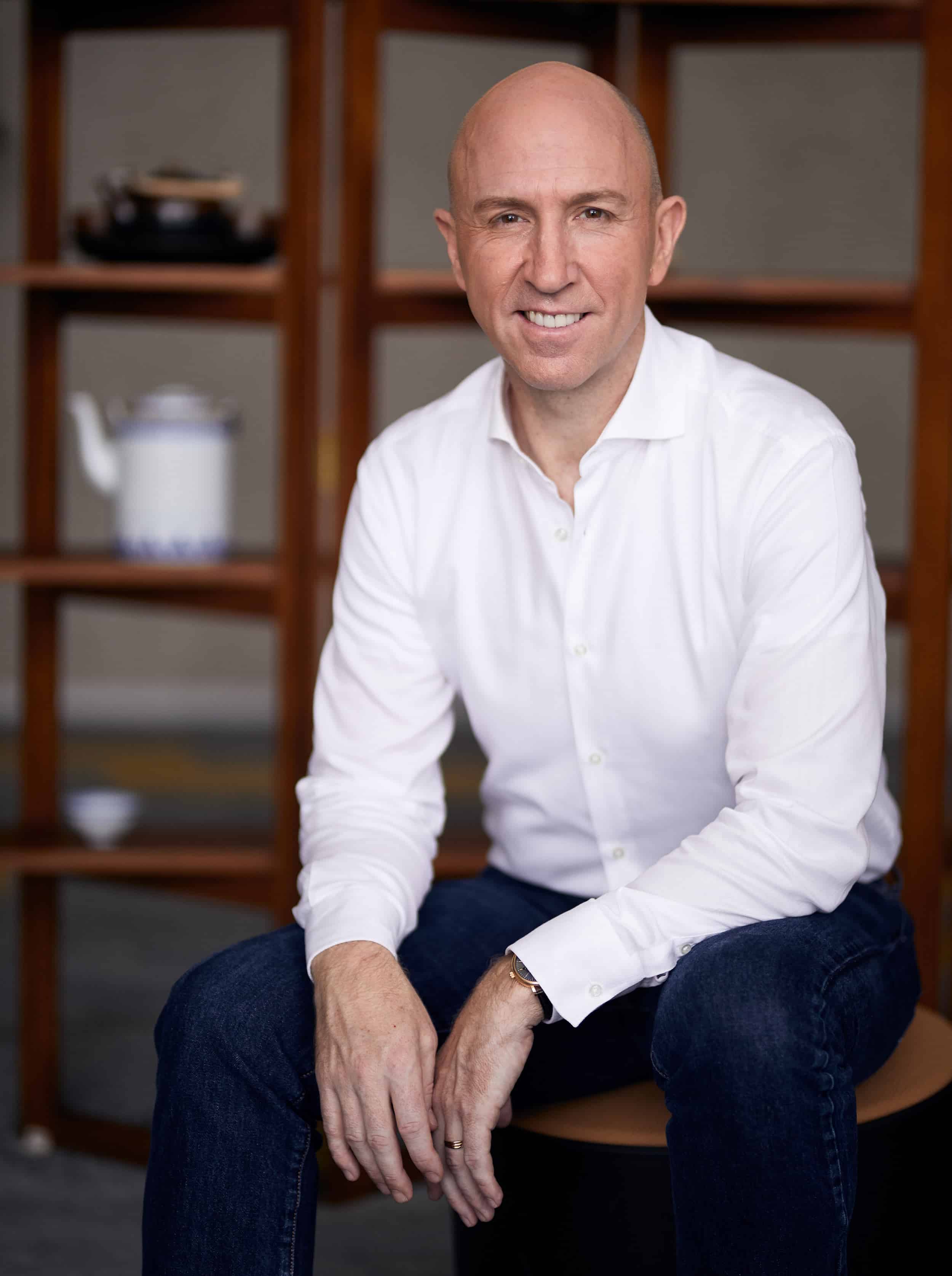SAP recently announced the appointment of Scott Russell as a member of the Executive Board and head of its Customer Success organization.
 In leading the company’s global sales, services, partner, and customer engagement teams, he is responsible for SAP’s business across the globe, with a resolute focus on the success of more than 440,000 customers, 21,000 partners, and 40,000 employees within the organization.
In leading the company’s global sales, services, partner, and customer engagement teams, he is responsible for SAP’s business across the globe, with a resolute focus on the success of more than 440,000 customers, 21,000 partners, and 40,000 employees within the organization.
Here, Russell shares his experience in the business technology sector, the voice of the customer, and the sage advice that has accompanied him throughout his career.
Q: How did you get into the business technology sector?
A: My parents played a big role in my decision to study business and ultimately go on to work in this sector. They’ve spent their whole lives helping others. Their focus on learning and serving the wider community helped me see early on the potential to influence change – whether through ground-breaking innovations or simply by finding better ways to do things.
I’ve had the opportunity to work at some fantastic companies. My first job in the sector was as managing consultant for PwC. This gave me immediate exposure to end customers and how critical technology is to core tenets of a successful business: innovation, customer experience, value creation, productivity, and more. When you experience the power of technology – better yet, when you work in a tight team to deliver it – it’s simply addicting. I was hooked immediately, and couldn’t wait to explore and apply the next promising technology trend or tackle the next customer implementation.
Later at IBM, I had the opportunity to get even deeper into the technology. I remember this being so important at the time. I just had to learn as much as possible as quickly as possible so I could have absolute conviction in how I was advising customers. Being there with the customer, managing the process end to end – from value proposition, to delivery, to the customer’s experience using the solution – that was incredibly valuable experience.
At SAP, the exposure to diverse geographies, new technologies, and different industries took on a whole new level. It was already known for its stellar reputation for strong customer relationships and ability to build a brilliant network of expertise around its customers. I felt – and still do feel – incredibly lucky to be a part of this.
I think this blend of technology, delivery, partnership, and customer engagement really helps you focus on value at every interaction with the customer. It’s a mindset that I’ve tried to live at SAP for the past 11 years, one that I try to promote within our teams, and one that has become even more critical as businesses adopt and consume technology more in the cloud.
The customers, the technology, the diversity, and the passion of the people I work with each day – this is all incredibly rewarding. But at the end of the day, what attracted me to SAP and what continues to engage so many of us at the company is how well it aligns to our values as individuals and as a team. SAP truly pursues its mission of helping the world run better and improving people’s lives.
What are the biggest challenges you are hearing from business leaders today?
You often hear the term digital transformation in our industry, but it lends itself to a number of interpretations. Simply stated, consistent in our customers’ voice is the demand to apply the latest technology to find a better way to do business. “How do I take advantage of AI, blockchain, and machine learning ? To make my supply chain more robust? To improve the quality of my products, hire the best talent, improve the experience of my customers?” Regardless of industry or geography, this is the common thread in our customer conversations.
Our customers’ calls for digital transformation have never been louder than during the pandemic. Social distancing, remote working, and supply chain resilience have been some of the most forceful factors in accelerating the economy into a state of hyper-digitization. Even the most reluctant businesses have come online, while others have accelerated their digitization projects. Estimates suggest the industry has condensed five to 10 years of digitization into one.
SAP, for example, has helped tens of thousands of customers go live in less than a year. We’ve helped hospitals build applications to track demand and availability of ventilators, supported government authorities in automating cash-relief payments to citizens, deployed national virus-tracking dashboards, introduced applications to help health authorities ensure availability of critical medical supplies, and got scores of business up and running on e-commerce platforms to stay connected to existing customers and attract new ones. Eighteen of the 20 major COVID-19 vaccine producers are running their production on SAP solutions. At companies like Moderna, SAP is supporting compliance with international legislation intended to prevent counterfeit medicines to reach patients.
While we hope the virus lets up very soon, I don’t think the momentum behind digital transformation will. Businesses will move from digitization as a means of managing a crisis to one of capitalizing on newfound opportunity. We’re on an irreversible digital binge.
What are your priorities to help businesses make the most of this hyper-digitization?
The success of our customers’ transformation has required us to accelerate ours; we put two important foundations in place last year to prepare for this shift. First, we ramped up our investment in cloud capability across the company. We announced more research and development, greater co-innovation, and better integration, as well as improved security, reliability, and availability across our solution portfolio.
Secondly, in March last year, we brought together all of our customer-facing teams – sales, services, customer-engagement, and others – under the single mandate and board area of Customer Success. The premise and outcome have been a streamlined experience in our engagements with our customers, strengthened relationships as evidenced by our significant increase in net promoter score, as well as a focused feedback loop through to engineering that ensures our customers’ voice inspires every line of code, every business process, and every single digital interaction.
These foundational moves are exactly what enables us to better deliver on our customers’ digital transformation requirements, and do it even faster, more reliably, and at greater value – in the cloud. This goes beyond infrastructure and software as a service to full business transformation as a service.
More than three-quarters of the world’s transaction revenue touches an SAP system, with US $3.5 trillion in B2B spend crossing our business network annually, and 98% of the 100 most valued brands running on our innovations. Although hundreds of thousands of organizations have already moved significant portions of their workloads to the cloud with SAP during the past decade, the transition of our global economy to the cloud will accelerate this year.
We plan to unleash offerings, commercial models, and partnerships that will enable our customers to migrate to the cloud at unprecedented scale, transitioning entire industries and whole economies to a better way of doing business. By running full cloud with SAP and consuming business transformation as a service, organizations will be able to better modernize, standardize, and digitize – opening up new business models and revenue streams.
In short, we have shaped and continue to shape our entire organization around the customer and fine tune how we work together and with our partners to deliver the value of digital transformation in the cloud.
How do you know when you’ve been successful?
It’s pretty simple: we’ll know we’ve succeeded when each customer in every market is successful. We want every business across every industry and geography that partners with SAP to fully adopt and consume our technologies to derive the greatest possible value from them – and intensify their relationship with us as a result.
This is our ambition and my passion for our customers in a full-cloud future with SAP.
What piece of advice have you found most useful in career?
That the best way to achieve success is to help others succeed. At the end of the day, I think this goes back to the values my parents instilled: the best thing you can do to help yourself is to help others. This is so relevant today. Whether it’s challenges like the pandemic or climate change, or opportunities like hyper-digitization or breakthrough business models, you take them on together – motivated by a purpose much greater than yourself.



